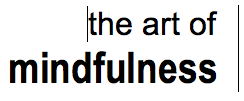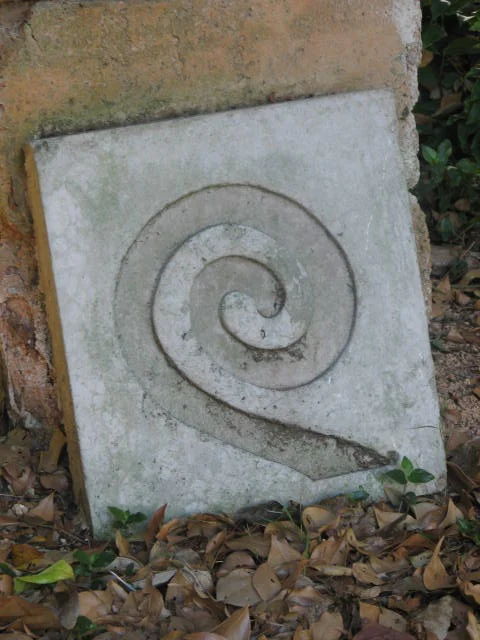The Art of Mindfulness - an article in Massage NZ Magazine, 4th Quarter, 2018
/Open a magazine, listen to a conversation about mental health, attend a leadership or staff training day at work, go to a yoga class or walk into a classroom, and chances are you’ll see or hear the word ‘mindfulness’. It’s a buzz word. So what is mindfulness, and how does it lead to greater ease, wellbeing and more enjoyment in everyday life? And how can it help you as a massage therapist?
Mindfulness is simply the state of awareness in which we’re present. This can happen naturally at various times in a day or a week, often when someone is enjoying and fully engaged in what they’re doing, and aware as well, of their own body/mind. Climbing is a good example. A skilled climber needs to be aware of their balance and body, the contours of the rock face, the wind direction, their own energy and breath, their mind state... But more often, we’re not present. Think of those conversations where you give all the cues that you’re listening, but actually, in the privacy of your own mind, you’re thinking about what and how you can express the next thing you want to say, or your judgments of what they’re saying. Maybe you’re even planning what you’ll pick up later for dinner! Sometimes, in times of stress, it’s possible to eat a whole meal and not truly taste the flavours, or notice what you ate. We can walk on the beach and not hear, feel or see very much at all, because we’re so busy planning, strategising or thinking back over whwe should have said in that conversation yesterday. And when we put our bodies somewhere with the intention of relaxing (like our beds), there are times we can’t turn off our worrying/planning/catastrophising thoughts that tumble in, and we can enter a cycle of anxiety and overwhelmingness.
Don’t get me wrong. There’s nothing wrong with the mind: it’s a fabulous servant. But
it’s a terrible master, and most of us have little or no training in how to use it or allow
it to rest in a place of natural balance. And then it can become like a run-away train, blowing around like a blade of wheat in the wind, leading to stress and suffering, but also robbing us of the simple pleasure, in this briefest of time that we’re alive, of enjoying what it is to be in a human body - sensing, breathing and simply ‘being.’
This ‘being’ aspect of a human is so very under-rated in our culture. It’s seen as wasting time. And acceptance of ourselves as we are, right now, is not encouraged. We grow up being rewarded for doing, achieving, pleasing others, pinning our eyes on future goals, and altogether proving how much we ‘know’ mentally. It’s not surprising that we usually derive a sense of worth on the success of those conditional things, forgetting that in simply ‘being’, we are enough. And that truth - that we are enough, that we are inherently OK just through ‘being’ - that’s the place from which we begin the practice of mindfulness. We begin from the place that this moment - no matter what is going on in our surroundings, bodies, thoughts or feelings – this is OK.
So, as many of you reading this will know, the practice of sitting mindfulness, also called meditation, is the formal time when we spend 15 or 30 or however many minutes intentionally practising and strengthening the art of attention and acceptance - of bringing the naturally wandering mind over and over again, back to awareness of the present moment. Constantly practising the stance of acceptance of what is. As beginning practitioners, it’s a good idea to give ourselves something for the mind to reston and come back to (often called an object of mindfulness), which could be the sounds we can hear, or the breath, or sensations
in the body. There are all sorts of different mindfulness practices, and you can find numerous guided mindfulness practices on the net. There are apps too. Because, like going to the gym – it is work that builds the muscle of present moment awareness – mindfulness needs ongoing practice to bear fruit in the rest of your life.
A classic practice, which is great to start concentrating the mind, is to count the breath, counting 1 as you inhale, 1 as you exhale, and increasing in this way up to 10, then returning to 1 again. The practice is to notice when your mind wanders (e.g. oh, look at that, I’m imagining being in Fiji on a beach...). Then with good humour and compassion, gently escorting your attention back to the object of mindfulness which in this case is counting the breath. Two breaths later you might get caught up in planning your work week, and it may take some time before you notice you’re not ‘here’ - that’s fine. When you do ‘wake up’ to what your mind is doing and where it’s gone, you remind yourself it’s OK, and return to the counting. You do that in response to anything, including self-talk, (e.g. hell, this is boring, I can’t do this...), judgements, time travelling to the past or future – you simply notice what has hijacked your attention, and you come home to the breath. In this way, you develop and strengthen the witness aspect of yourself, the aspect which observes anger but is not angry, which observes stress but is not stressed... You begin to discover that you are not your thoughts, that you have a choice as to whether to engage with them and run with them - or not - during this practice time.
Mindfulness practice is not the attempt to relax or to improve ourselves in any way, to think ‘better’ thoughts or to stop thoughts (which is impossible). It is however, the radical acceptance of what arises, moment to moment, combined with the discipline
or returning over and over again to the perspective of the witness. When a person does this, paradoxically, the nervous system does relax, the body softens, and an ease begins to make itself known. But we’re not demanding this of ourselves; if we sit for our 20-minute practice with an aching body and a jazzed-up mind, that is the grist for our practice – we notice, we allow, we cease the fight with ourselves, we come home, with compassion, to the breath and to the moment.
And, in the same way that going to the gym leads to more strength or stamina in everyday life, the fruits of the formal work of mindfulness practice start to become evident, quite naturally. I might notice that when I get caught up in particular thoughts, I stop breathing fully. I might notice the habit patterns of mind I habitually use to avoid the present moment. I begin to notice more the effect of foods I put in my body, the echo in the body/mind of various choices I make. I begin to notice when I try too hard with a client, and the effect that has on my own energy. These things happen because I’m waking up more to what is actually happening, moment to moment.
These days I only do massage for friends, but when I worked part-time as a therapist, I discovered a recurring tendency in myself, in relationship with the client, to ‘go out’
too far from myself, to be so aware ofwhat they needed that I forgot my own posture, my own groundedness, my own breath. I enjoyed using the work then as a mindfulness in movement practice, staying with the breath, noticing when my pelvis wasn’t supporting me, noticing the impressions I received, thoughts that wanted to distract and engage me. Of course awareness doesn’t always change things, but is often the beginning of a more natural, less forced way of relaxation and ease in relation to others.
If you’d like to explore mindfulness more, there are 4-week introductory courses all around NZ (and Australia) offered by Mindfulness Works.
The art of mindfulness offers 1-day retreats in the Wellington/Kapiti area. The next residential retreat, The Art of Natural Ease, is at Te Moata Retreat Centre in the Coromandel, and combines mindfulness with qigong.
I’d recommend ‘Wherever you go, there you are’, a wonderful book about mindfulness by Jon Kabat-Zinn.
And Headspace and Calm are two apps people have often told me they enjoy.
I’d like to end with a small excerpt from Bob Sharples’ book, ‘Meditation: Calming the Mind’:
“Don’t meditate to fix yourself, to improve yourself, to redeem yourself; rather do it
as an act of love, of deep warm friendship to yourself. In this way there is no need for the subtle aggression of self-improvement, for the endless guilt of not doing enough.
It offers the possibility of an end to the ceaseless round of trying so hard that wraps so many people’s lives in a knot. Instead, ... meditation as an act of love. How endlessly delightful and encouraging.”

